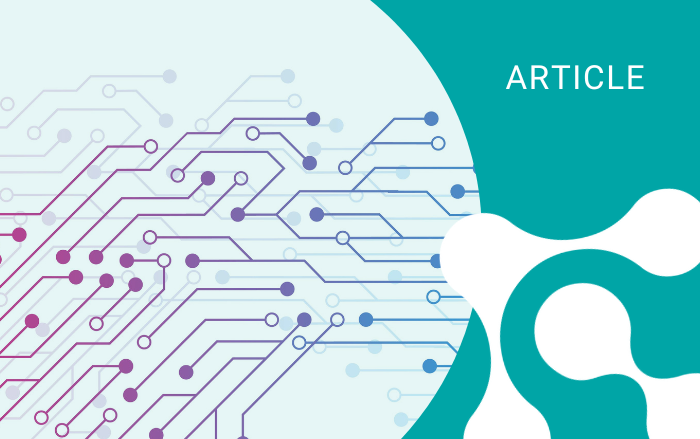In 2021, global life sciences mergers and acquisitions (M&A) activity totaled US$219 billion. Most of this activity concerned MedTech and Life Sciences service businesses, as biopharma M&A activity dropped to US$108b in 2020. But, it doesn’t mean it wasn’t an active year for biopharma M&A.
Looking ahead, analysts expect dealmaking to continue. Biotech valuations are coming down and the “innovation deficit” among pharmaceutical companies expected over the next few years could be a propeller for new deals.
Mid-size to large pharma companies will likely continue to bring in strategic assets through mergers and acquisitions that can help offset the expected losses should some of their key products lose patent protection over the next several years.
What makes Life Sciences M&A transactions so peculiar?
M&As have been a proven framework for business growth – you get to acquire new assets, customer bases, operational capabilities and extra brand equity instead of nurturing them in-house.
However, combining two Life Sciences organisations involves more than an assessment of staffing and finances. It involves processes and systems.
According to Deloitte, IT is typically the largest investment cost when integrating healthcare systems. It also accounts for about 70 percent of all synergies in the process.
Many M&A transactions don’t live up to expectations as they often stumble on IT integration issues. Simply stated, some companies fail to make the required investments, leading to complexity and spiraling costs down the line. This is especially true in the Life Sciences industry, whereas the acquiring and the target companies may have complementary strategies, but the integration of technology may prove difficult because it does not receive adequate consideration during due diligence.
Inadequate IT integration strategy and execution are the top reasons for these failures.
How to deal with IT Integration – best M&A practices
How does IT play a prominent role in M&A integration?
Savings may come from consolidating data centers, eliminating duplicate software licenses and network contracts and, of course, reduced organizational and support costs.
However, when it comes to the Life Sciences environment which is under the regulatory pressure, achieving efficiency and delivering the desired business outcomes highly depend on dedicating a set of specific capabilities. It requires good planning around integration, embracing business processes and IT systems with a unified understanding of regulation, business know-how, and technology.
A comprehensive analysis work, followed by a diligent change management and a well-structured governance will be the critical success factors.
Acquiring those capabilities through collaborating with domain expert organizations helps a lot to carry out consolidation, cost optimisation and risk management.
Here are some best practices to consider:
- Allocate resources and budgets before closing the deal.
Companies that successfully execute M&As are the ones that set up an information architecture that is optimally suited for acquisitions. They appropriately allocate resources and budgets before initiating any deals.
They develop standard processes, tools, and data-management systems to absorb an acquisition more effectively.
They know that this kind of discipline and investment will pay off later. That’s why the best companies always reevaluate system integration cost estimates and appropriately allocate the necessary resources and budgets.
- Involve IT leadership sooner in the process.
Closely related to the above, top management need to make sure that IT leaders have a seat at the due-diligence table to get their perspective on systems integration.
By evaluating the target company’s technology, executives can determine how it complements their own IT strategy and operations, including what systems to retain and what data should migrate to the acquiring company’s platform.
The IT staff can spot potential obstacles to integration. For example, it may be incompatible platforms that will require a workaround, or outdated architecture and systems.
IT staff can gauge the target company’s in-house and outsourced capabilities, verify whether a shared-service model is in place, and determine how to retain the best talent.
Once the acquiring company has assessed the target’s technology, they can help identify opportunities and understand the true impact of integration and form realistic estimates of its duration. - Be careful while reevaluating procurement contracts during post-merger integration.
Merged firms often find that they have many similarities between their IT functions, even when there are seemingly few geographic, industry or product overlaps.
Companies can save a significant amount of money by reducing portfolios and outlining the skills and competencies needed for the future IT model. However, in the Life Sciences industry, simply that may not be the case how it works. Here are some of the activities where frequent mistakes are done that lead to common failures:- Comparing prices. Assessing similar contracts within the new organisation may simplify and standardise the processes of vendor management.
Discrepancies in prices are a chance to reap concessions from vendors. At that point, the joint expertise of the domain and technology gains a prominent importance to run a proper benchmarking and making accurate decisions both in the short and long term.
The cost optimisation initiatives on application portfolio, infrastructure, system management and governance are the critical silos to be identified within the context of business value impact. - Concentrating volume. The combination of existing contracts may lead to more volume savings, so reopening contract negotiations may be the right step.
Nevertheless, the specific business needs relevant to the Life Sciences industry -such as R&D, data management and protection, regulatory, and quality- may still require bespoke tools, competences, and capabilities which shall not be underestimated. - Rationalising applications. The combined IT footprint will identify redundant applications, which will lead to areas of rationalisation.
Leading companies start by identifying applications that do not meet business needs or are weak technically or functionally. Nonetheless, in practice, the business owners may resist colliding their application portfolio into a unified and single application.
Before jumping to conclusions, a skeptical approach that stimulates a profound process analysis work can reveal the nuts and bolts of rationalising efficacy. - Reducing infrastructure. Headcount and IT computing infrastructure reductions should lead to reduced IT spending in all areas, including hardware, software, labor, managed services and telecom.
The post-merger integration period is an opportunity to cut unnecessary or excessive functions. For example, the new company may be able to cut help desks and data centers by shifting work to the acquiring firm’s infrastructure.
However, in a regulated environment, every step of the change management requires deep knowledge and experience. Consolidation, transition, or decommissioning processes may come out to be way harder and more complex than expected.
The results to bear such as unexpected indirect costs, uncontrollable timelines in project plans, reworks, etc. may draw you away from your purpose of achieving efficiency. - Hit the ground running. Serial acquirers move quickly when integrating into a single set of systems.
They reduce the talent loss and distraction from extended integration periods and they capture synergies earlier because they understand that speed is important.
Faster systems integration enables the faster realisation of that revenue and costs synergies and earlier introduction of new technological capabilities.
The most successful acquirers complete most of the systems integration within the first year of closing and it can take significantly longer for companies that lack a disciplined, systematic and repeatable approach.
- Comparing prices. Assessing similar contracts within the new organisation may simplify and standardise the processes of vendor management.
Conclusion
Researchers have shown that lack of IT integration is one of the most important reasons for M&A failures in the Life Sciences.
In the best mergers, IT brings short- and long-term benefits that cannot be ignored, by enabling business synergies, providing business continuity and creating cost savings for the new organisation.
IT will help build the combined capabilities and operational model. Once the short-term integration work is complete, IT can devote its energy to support the planned business growth of the new company.
A cost-effective and flexible technology infrastructure is a prerequisite for success. IT’s role in post-merger integration not only brings real results – it is the difference between a successful merger and one that never meets expectations.
Sources
- S Shah and L Hermoye. Process and Systems Integration: A New Source of Competitive Advantage. Bain & Co 2019.
- J Hedman & S Sarker. Information system integration in mergers and acquisitions: research ahead. European Journal of Information Systems volume 24, pages117–120 (2015).
- Toppenberg GN and Henningsson S (2013) An introspection for the field of IS integration challenges in M&A. Proceedings of the 19th Americas Conference on Information Systems, Chicago, Illinois, August 15–17.
- H Sarrazin and A West. Understanding the strategic value of IT in M&A. Jan 2011.
About the Authors
Claudio Rota, Business Development Advisor at Arithmos
Umran Turker, Chief Commercial Officer at Arithmos




